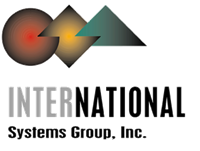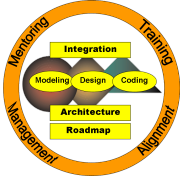- Home
- /
- Clients
- /
- Case Studies
- /
- Credit Suisse Case Study
Next steps:
Events:
Conference 2014
The Connected Enterprise – Cloud, Mobile, and the Internet of Things
Rome, Italy, December 2-3, 2014
Scheduled seminars
The New Integration Manifesto: Applications, Data, Cloud, Mobile, and the Internet of Things
October 27-28, 2014
Application Development in the Age of Cloud and Mobile
December 11-12, 2014
Case Study: Integration Framework for Financial Services

The Credit Suisse Group provides banking and insurance solutions for private clients, companies and institutions.
The Fixed Income Department had a wide range of requirements, including the creation of a common repository, leveraging a large portion of the existing business logic hosted by 23+ applications, moving data transformation and content based routing rules outside of the database and into a middle tier, implementation of common system management features, application and database failover, load-balancing, and the provisioning of a data distribution mechanism with different Quality of Service (QoS) levels.
ISG, in collaboration with Fixed Income, introduced and implemented a comprehensive integration solution to address these requirements. The solution focused on the following areas:
- Introduction of a Service Oriented Architecture (SOA) that aimed at improving the reuse of services among different application projects. FID operated a fragmented development organization that typically selected whatever tool fit their immediate needs. The SOA fosters the creation of a repository of reusable services. This facilitated reuse and collaboration across development teams. All business services were accessed via standardized mechanisms.
- Existing (legacy) as well as new applications were encapsulated as services. Integration Adapters lived at the boundary between legacy applications (i.e. encapsulated services) and the middleware infrastructure. They mapped proprietary APIs into well defined service interfaces, such that service requestors only deal with the standardized service interfaces. During development of new applications a “service base” was utilized, which provided automatic generation of standard service interfaces in order to expose application functions conforming to the SOA. Examples of existing application services included the Pricing Server, Security Master, etc.
- Introduction of a data Abstraction Layer to encapsulate access to different data repositories using a single interface.
- An Abstract Transport Layer that provided different Quality of Service (QoS) levels via a single interface on top of different transport mechanisms (e.g. TIBCO publish / subscribe, bulk data transfer, Java RMI, XML over HTTP, and SOAP).
- A System Management Framework that provided application load-balancing, failover, logging and monitoring.
- A Configuration Service was implemented on top of LDAP, to store system and application configuration data.





